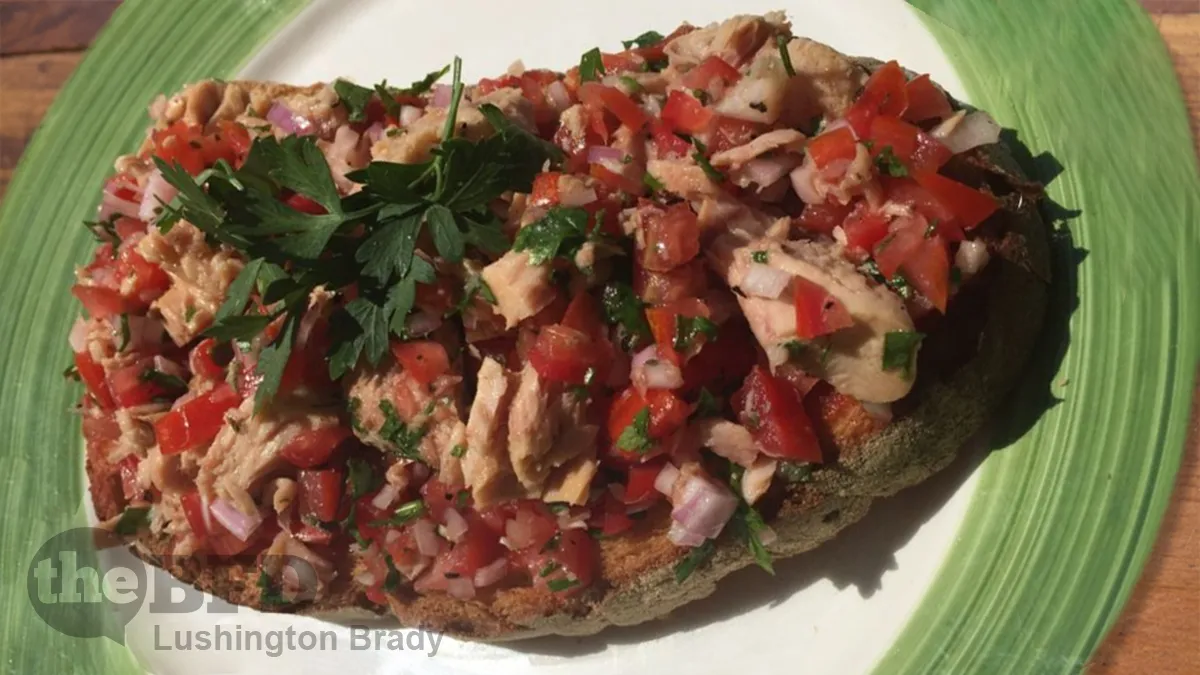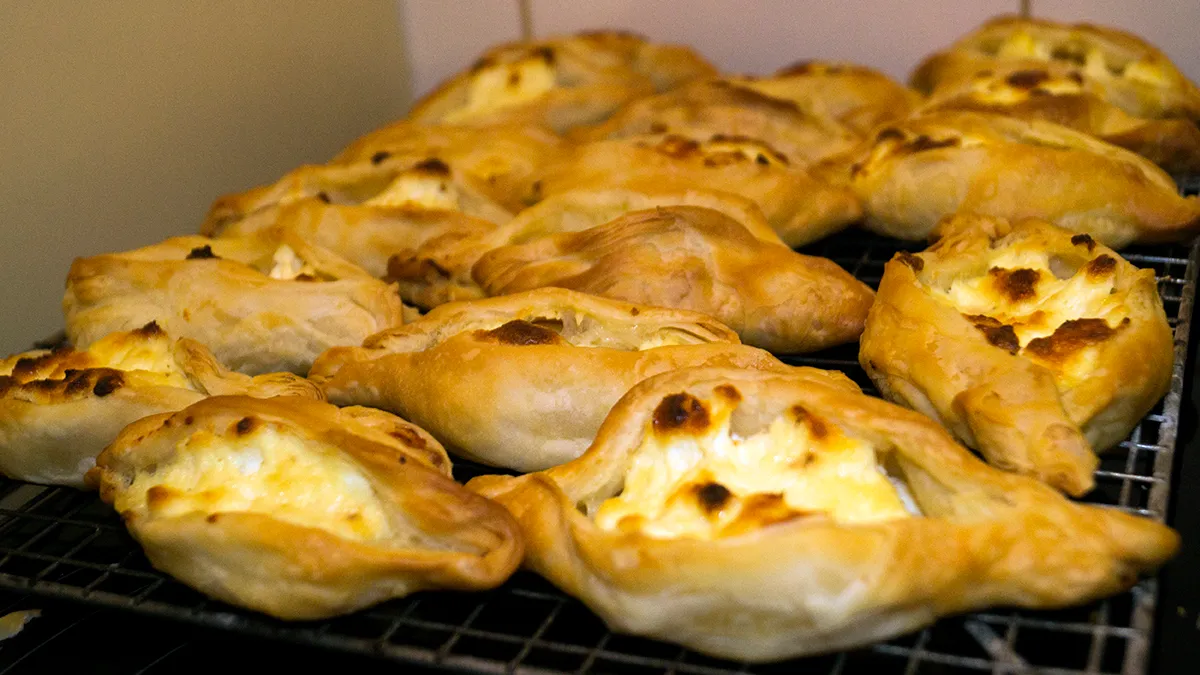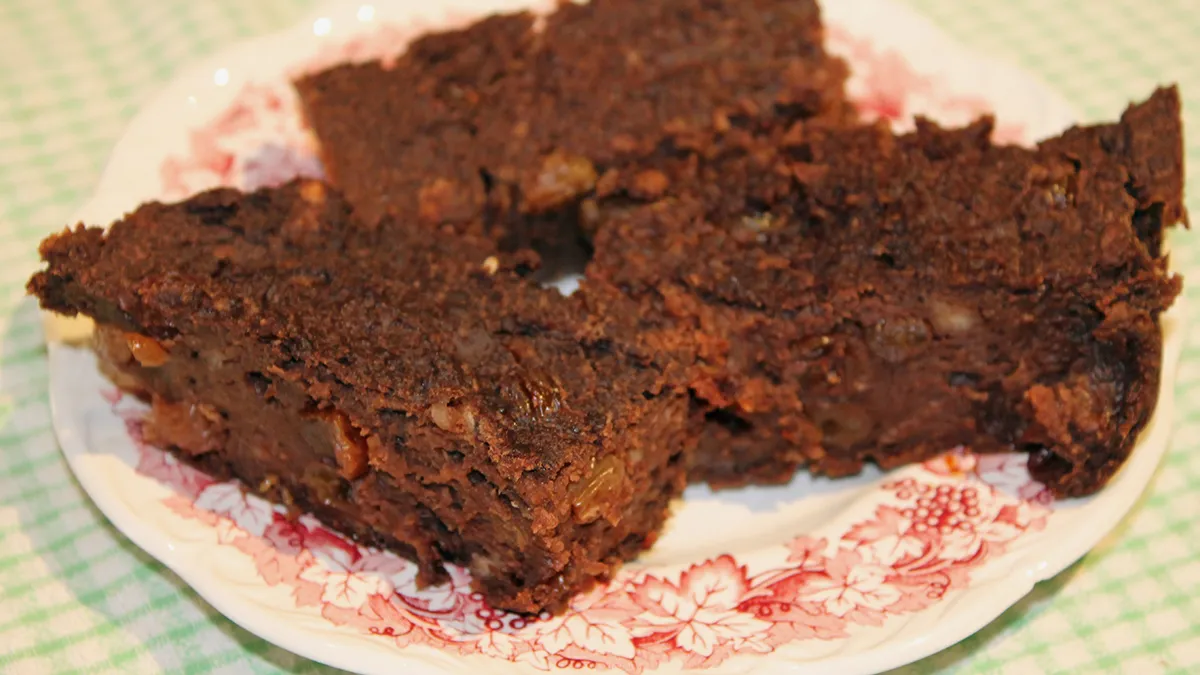Sweet breads come in a variety of shapes, flavours and sizes, and their singular purpose everywhere is to bring you closer to that warmer spot somewhere nearer to heaven itself.
Brioche, kurtosh, doughnuts or even a Sally Lunn at your local school tuck shop in the good old days were always that icing on the cake.
Bread was for sustenance and sweet breads were always for pure pleasure.
With ‘wokeness’ now extended to what is good and bad for us to chew, we find the powers that be are carrying out a full frontal assault on our taste buds. Here in Israel all desirable foods now come with a big red warning sticker attached to the packaging, declaring loudly: too much salt, saturated fat and sugar. There are green stickers as well which are reserved for foods that taste closer to cardboard or have the consistency and lightness of air. So the all-knowing are telling us that tasty and desirable is bad, and that the dull and empty of any real substance and flavour are what we really should be seeking out if we want true satisfaction and to be good, healthy and worthy citizens of this new world order.
‘Crunch Cakes’ (sweet yeast breads) as they call them up here are stuffed with a variety of fillings. Poppy seeds, cocoa, cinnamon, creme patissiere, jams, nuts, BUTTER and SUGAR…..whatever you can cram into them, they never fail to please.
To go off on a tangent, ‘sweetbreads’ was originally a definition for certain types of meat, usually offal consisting of various internal organs and glands from lambs and calves. They were called sweet because they tasted richer and sweeter when compared to your average cut of meat and were referred to as “bread” because the old English word for flesh is “broed”.
Back to ‘crunch cakes’: there are two basic recipes. One is a sweet yeast bread with sugar and enriched with eggs and butter, kneaded as you would any old bread, and the other is a folded, butter-filled, yeast dough like that made for croissants. The first is easy to make and can be finished in a morning, allowing for the rising of the bread. The second is more difficult and involves folding the dough three times with half-hour rests between each fold, folding in a particular way and leaving to sit overnight. It must be done over two days as you would for croissants. I think it best to use Recipe 1 and leave Recipe 2 to the professional bakers.
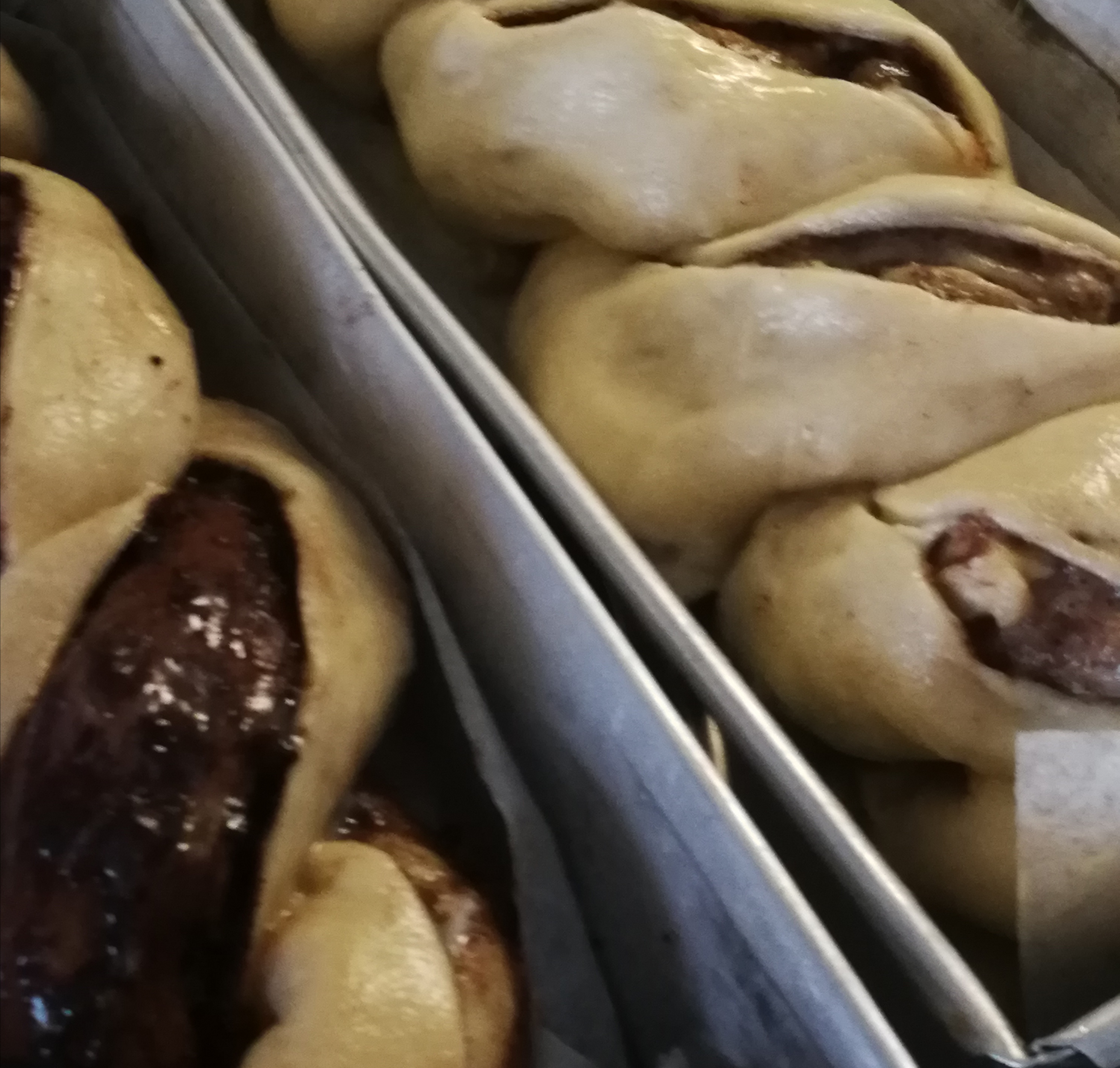
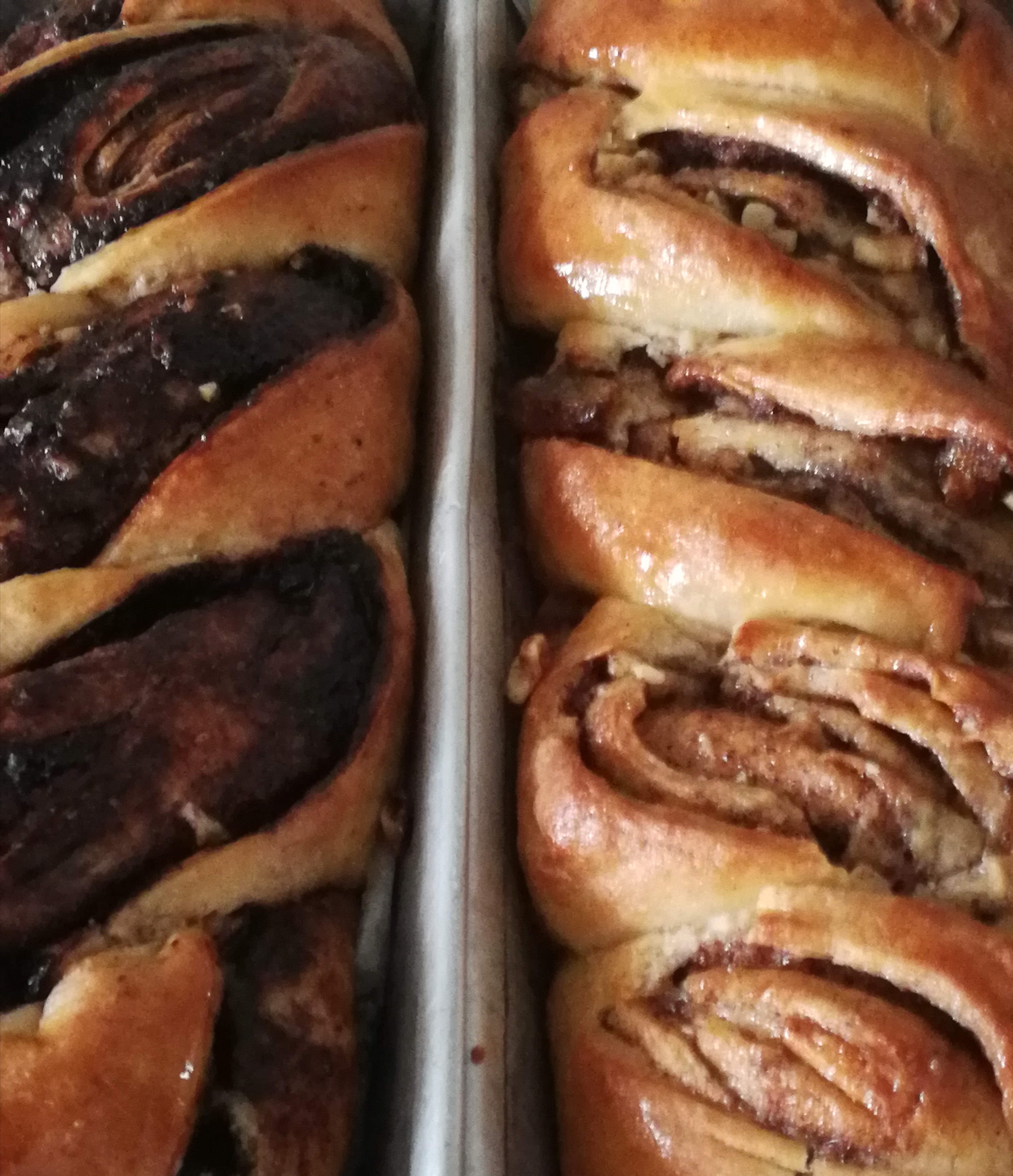
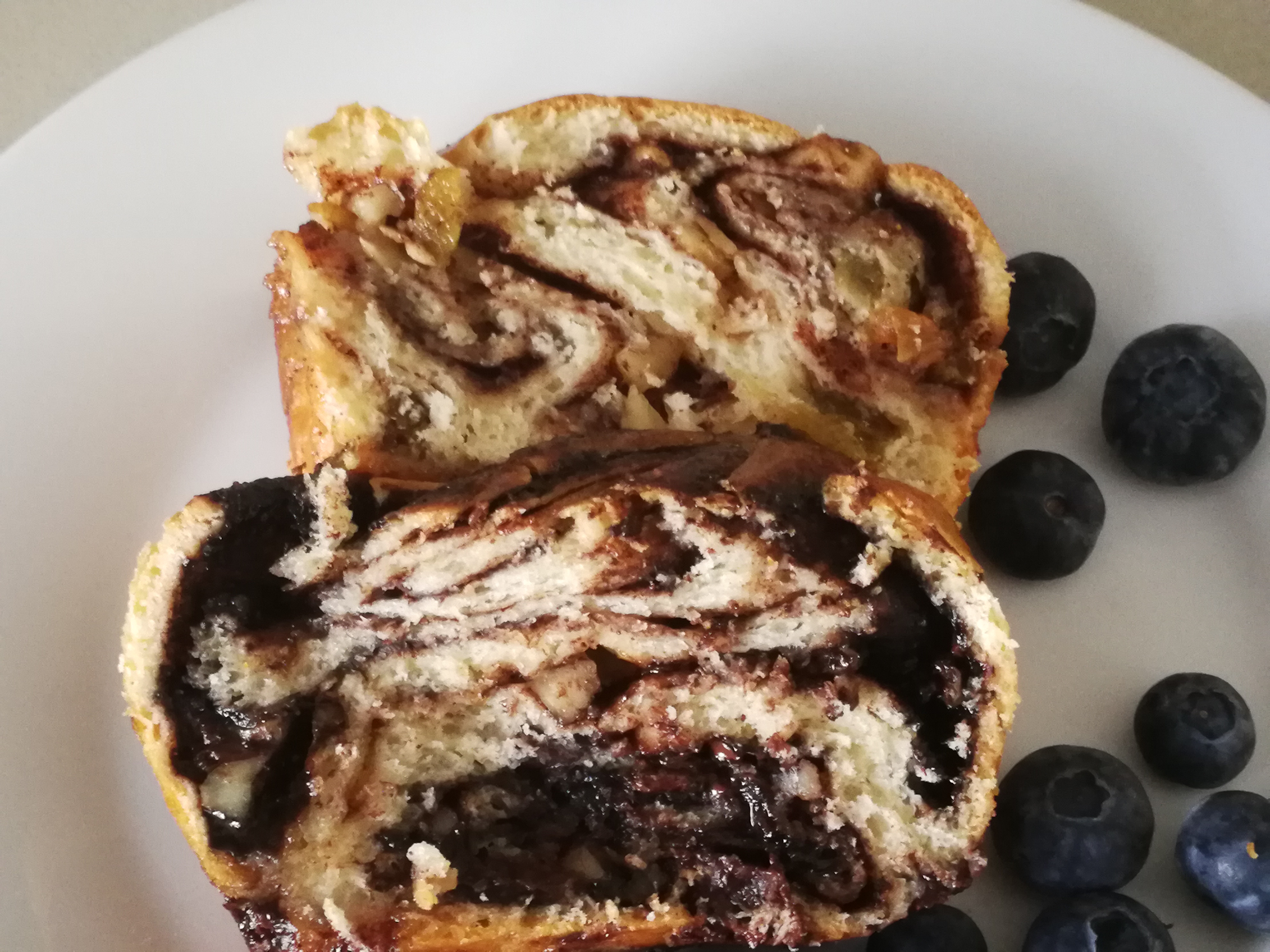
Sweet bread. Photos supplied. The BFD
Crunch cake Recipe 1. Will make two crunch cakes in ‘English Cake’ sized pan/form. I will do one with cocoa filling and the other with cinnamon.
Ingredients:
- White flour x 500 gram
- Dry yeast x 8 gram
- White sugar x 75 gram
- Milk x 150 gram
- Eggs medium x 2
- Cap of vanilla essence
- Salt x 3 gram
- Cubed softened butter x 100 gram
Fillings:
These fillings are simple and tasty and are dry and can be stored for next time if you don’t use it all. Of course, if one desires, one can make chocolate creme patissiere to spread on the dough instead of sprinkling the dry mixture, or use halva spread.
Cocoa Mix:
- White sugar x 100 gram
- Cocoa powder x 25 gram
To be mixed together.
Also to be added: - Chopped walnuts x 50 gram
- Chocolate drops for baking x 50 gram
- Melted cooled butter for brushing x 100 gram for both cakes.
Cinnamon mix:
- White sugar x 100 gram
- Cinnamon powder x 4 gram
- To be mixed together.
Also to be added:
- Chopped walnuts x 25 gram
- Sultanas or raisins x 25 gram
Eggwash for brushing
- 1 egg mixed with water to a thin consistency and poured through a sieve to remove the strands in the egg whites.
Sugar syrup for brushing when cake comes out of oven:
- 100 gram white sugar
- 100 gram water
Heat until sugar dissolves.
Method:
Put all dry ingredients into mixing bowl and, using a hook, mix dry ingredients for a minute. Add eggs and vanilla to the milk, mix with a fork and pour a little at a time into the dry mixture while it is mixing. When it all comes together, mix for at least seven minutes on medium, start adding the butter a few cubes at a time and carry on mixing until all the butter has been absorbed completely into the dough.
Remove dough from bowl, lightly dust hands and surface and turn dough into a tight ball. Add a little flour into the bottom of the bowl, return the ball of dough to mixing bowl and cover. Leave to rise preferably in a warm place until it doubles its size.
Cut ball in two, set aside one half and leave covered. Have flour handy for dusting to stop the dough sticking to the bench top and rolling pin.
Roll out each ball into as large a square as possible to a thickness of about 5 mm. Brush the melted butter liberally over the dough gently, sprinkle the dry mixture evenly ensuring good cover. Sprinkle the nuts and chocolate drops; what remains of the melted butter you can drip all over the contents spread on the dough.
Starting at each end of the dough, roll towards the centre finishing with two similar sausages of filled dough, still connected. Gently with a knife cut between the two rolls and then cut along the the top of the roll about a centimetre into the dough.
Place one sausage of dough on top of the other forming an X and then plait each side loosely outwards from the centre, place into a paper lined English cake form and brush with egg/water mixture for colour.
Leave to rise an hour in a warm place, preheat the oven to 180 C (or 170 C for fan oven), pop into the oven for 30-35 minutes. Remove and immediately liberally brush with the sugar syrup. Leave to cool before slicing.
Next week colourful shakshuka, regular fare from Morocco to Iraq, eaten throughout the day for breakfast, lunch or dinner and in between.
Any questions or queries, I am happy to help, write to me at meravgy@gmail.com
If you enjoyed this recipe why not share it with your friends via social media or e-mail? If you want a copy of your own select the print option at the top of the page.



